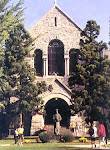**The following is the first of occasional book reviews on pedagogy. These books were purchased by the Mellon TLI, and if anyone would like to review a book, please contact Meredith Goldsmith.**
“How should I teach?”
Elizabeth Ellsworth poses this question in the introduction of her book, Teaching Positions: Difference, Pedagogy, and the Power of Address. But if you’re expecting her to answer it with a rundown of pedagogical techniques, you’d be wrong. Instead, Ellsworth’s response comes in the form of a surprising paradox: “Teaching is impossible…and that opens up unprecedented possibilities” (18).
This phenomenon is approached and explained in various ways throughout the text. Decidedly against the limited thinking about education solely as a social science, Ellsworth draws on a multitude of scholarship from fields within the humanities. Her main expertise comes from the area of film studies, but she also cites literary criticism, psychoanalysis, feminisms, and cultural studies.
Ellsworth uses the paradox format as a springboard for discussion and explanation in each chapter. One of her major paradoxes deals with mode of address, a film studies term that asks “Who does this film (or, in terms of education, this curriculum, school, teacher, etc.) think that I am?” The paradox, Ellsworth writes, is that our conscious and unconscious perceptions of our students consciously and unconsciously shape the way we address them, and try as we might, we can never be fully successful in making our students “learn” what we’re trying to communicate to them. In other words, “We teach, with no knowledge or certainty about what consequences our actions as teachers will have” (17).
Ellsworth thus proposes radical revisions to the goal of Western pedagogical thought, which she believes is for students to accumulate knowledge about all there is to know. Instead of answers, she believes in posing “moving questions” and using the technique of juxtaposition to explore the power of discontinuity (13).
For example, she cites an account of an incident where a near-victim of a lynching, James Cameron, sees one of the white men who wanted to kill him happily riding a bicycle with his daughter. Cameron wonders how this carefree man could be the same person as the one he saw capable of such rage and hatred. Ellsworth suggests that this story reveals how “whiteness is always more than one thing…it is never the same thing twice,” and how it is “staged as historically situated and context specific.” She feels that Cameron’s retelling of this story “is pitched to an array of seats in the theater of U.S. race relations” and “those multiple seats are moving.” This broad mode of address “manipulate[s] readers into taking on responsibility for the meanings they make” (156). Taking on responsibility for the meanings we create is an interesting way to think about education, having less to do with traditional “learning” and more to do with acknowledging one’s own participation in creating cultural constructions.
Teaching Positions is a highly complex and theoretical book that is about uncovering the way we think about education, looking for new ways to conceive it through various disciplines in the humanities, and exploring the possibilities those new ways present. Fortunately, however, the book reads much more smoothly than might be expected. It’s clear that Ellsworth, as an educator, is familiar with the effective tactics of storytelling and using examples to demonstrate her points; for example, she contemplates the film Jurassic Park in order to explain mode of address. She also often restates her points in different words in an earnest attempt to be as clear as possible while dealing with complex abstractions.
It’s probably a bit ironic that I’m trying to summarize what I’ve learned from Ellsworth’s book, since she herself states that “any unproblematic, direct, reflective, total exchange of knowledge [is] impossible” (65). However, even if what I’ve taken from Teaching Positions cannot be exactly what Ellsworth had in mind, she is correct in concluding that the impossibility of teaching opens up new possibilities, for what I feel I’ve learned is that I have new things to think about.
Saturday, March 27, 2010
Subscribe to:
Post Comments (Atom)

No comments:
Post a Comment